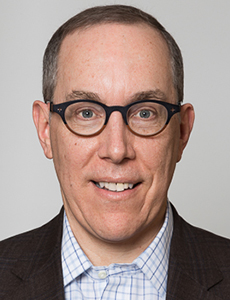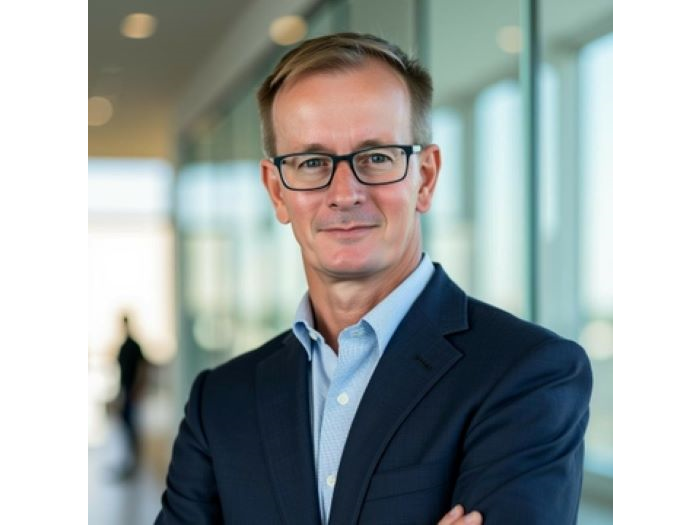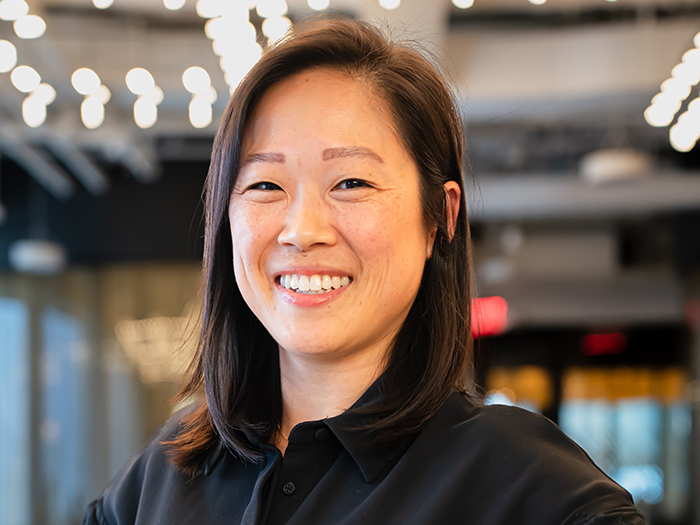Your Next Catastrophic Risk? Hint: It Has Nothing to Do With Climate Change

Across industries and across business lines, the liability landscape is in a state of flux.
The plight of PG&E after last year’s catastrophic wildfires highlights concerns about wildfire liability claims going forward. Traumatic brain injury claims are cropping up earlier and are a growing issue for automotive and general liability lines. Practically any entity that touches opioids could be ensnared in the effort to shift liability for the opioid crisis onto the broader health care industry.
These issues and so many more are occupying the headspace of carrier and brokerage executives, especially in light of the environment inside U.S. courtrooms right now, where 8-, 9- or even 10-figure liability verdicts are no longer unheard of.
“You’re seeing billions and billions of market value knocked out of companies as a result of even just one verdict,” said Randy Nornes, executive vice president, Aon Risk Solutions.
Experts say that while extreme settlements are par for the course for class-action suits, it’s the large-award single-plaintiff cases that have been a growing source of concern during the past decade or so, as more claims exceed retentions and dig far into policy limits.
“As the severity of claims have increased over the last few years we have adjusted our underwriting appetite and pricing for this new reality,” said Jeff Summerville, head of casualty, financial & professional lines North America, Swiss Re Corporate Solutions.
Automotive product liability and product defect/recall are key drivers for large liability claims globally. So is the beleaguered pharmaceutical industry, which struggles to combat the automatic assumption of liability in disease-related cases.
“If we understood all the science behind every disease, I think we’d be in a different place. But there’s not really hard science around what causes disease and what is the role of genetics versus environment. There are so many elements that [causation is] not really settled but it’s [being presented to a jury as if it was] settled,” said Nornes.
In 2017, a jury awarded Eva Echeverria $417 million in one of numerous ovarian cancer-talc lawsuits against Johnson & Johnson. The award was reversed a few months later by an appeals court judge. Attorneys for Echeverria’s estate are working to reinstate the original verdict.
In another talc case decided in 2017, Lois Slemp was awarded $110.4 million — most of it in punitive damages. In November, the court upheld the ruling.
In a Monsanto weed-killer-cancer case decided in August 2018, a jury awarded a single plaintiff $289 million — $250 million of which was punitive. The award was later reduced to $78.5 million.
“Just five years ago, our expectation for worst-case single plaintiff liability claims was around $25 million. Recently we’ve observed these same types of claims exceeding $50 million. Some juries award extreme damages out of sympathy for the plaintiff, regardless of whether there was actual negligence.”
Summerville cited the example of a recent verdict awarded to a family when two children in the backseat of a sedan were injured when the car was rear-ended by another vehicle. Although the manufacturer argued that the car driven by the plaintiffs performed exactly as it should have in such circumstances, the jury returned a verdict in excess of $200 million, more than half of which was in the form of punitive damages.
“While that figure may be reduced on appeal, in my opinion, that is an extreme award for this case,” said Summerville. “No matter how well a car is designed, collisions at high-speeds can lead to serious injuries. It does not mean there was necessarily any negligence by the manufacturer.”
How Did We Get Here? Let’s Start With the Lawyers
Law firms have become adept at advertising and marketing and using social media. The U.S. Chamber of Commerce estimates that law firms spent nearly $1 billion on ads in 2017 — about 116 percent more than 2006 spending.
With plenty of cases to choose from, they’re also more selective, focusing on the cases with the most drama and the most potential for high jury awards.
“As the severity of claims have increased over the last few years we have adjusted our underwriting appetite and pricing for this new reality.” — Jeff Summerville, head of casualty, financial & professional lines North America, Swiss Re Corporate Solutions
And when they do find cases worth pursuing, they’re better equipped to fund their endeavors. Litigation finance — where outside investors front legal fees in exchange for a cut of potential settlements or judgments — is big business. Its use by American law firms quadrupled between 2013 and 2016. And it’s still spreading.
In an October 2018 study published by Burford Capital, 70 percent of law firms surveyed that had not yet used litigation funding reported they were likely to start within the next two years.
“Plaintiffs’ attorneys are just getting better at bringing these cases, and they’re successful at getting larger settlements and jury verdicts,” said Summerville.
“These plaintiffs’ attorneys see what each other are doing. … Once the claim gets to a certain number, that becomes their benchmark for that type of claim.
“They think, ‘well, case XYZ settled for $50 million dollars. The facts of this case are similar to that one. So this should be $50 million dollars as well.’ We see that across the board.”
David Versus Goliath
At the same time law firms have been perfecting their strategies, a perfect storm of social and political changes are impacting the potential jury pool — AKA the public.
In the years following the financial crisis of 2008, the ranks of the disenfranchised swelled, giving rise to the Occupy Movement and chants of “We are the 99 percent.” The movement imploded before long, but negative public sentiment lingered, reinforced by copious media coverage of every messy corporate scandal from Takata to Theranos to Wells Fargo.
“So [the assumption is that] all these people are making money left and right and just basically gouging the consumers. That’s the general perception,” said Thai Hong, vice president of risk management with CBIZ Insurance Services.
“Then it feeds into the fire of, ‘Yeah, you’re an evil empire, so let’s stick it to you.’ That’s where a lot of these verdicts are coming from, because it’s not about that particular claim at all. It’s about the general feeling of corporate malfeasance or corporate greed and now we can punish them.”
Said Summerville, “Many of these cases are settled before they go to a jury trial. But the plaintiffs’ attorneys certainly know they have the threat of a jury trial to influence how much of a settlement they demand. Insurance companies and defendants — a majority of the time — don’t want to go to a jury because of the capriciousness of jury decisions.”
Carriers Are Making Moves
“[Carriers are] paying a lot closer attention to the capacity that they’re putting out on any individual risk,” said Jesse Paulson, Marsh U.S. excess casualty leader.
“They’re looking at rate. They’re looking at capacity deployed, and they’re looking at attachments way more closely than they would have several years ago.”
Paulson said these concerns are evident in the moves carriers are making right now.
“Some of them are being quieter than others, but they are making significant changes aimed at right-sizing that book of business.”
Added Summerville, “The market is moving upward when it comes to both terms and premiums right now, especially for insureds that present a challenging risk profile. But not dramatically. And not to the degree we feel it should be.”
Insurers do have new tools at their disposal to help manage their liability risk and develop new products around emerging concerns.
Insurtech analytics firm Praedicat uses algorithmic search, machine learning and natural language processing to extract insights from vast troves of peer-reviewed science to identify and quantify risks as they emerge, in effect bringing CAT modelling to the liability market.
Praedicat, born from an R&D project aimed at identifying the next asbestos, is working with insurers to help control their total aggregate exposure, limit exclusions and manage their portfolios. In essence, it turns emerging risks into named perils that can be quantified and reinsured, benefitting insurers and insureds alike.

Jeff Summerville, head of casualty, financial & professional lines North America, Swiss Re Corporate Solutions
Explained on the firm’s website: “Like a flood map, the casualty catastrophe map shows which products and practices are exposed to a potential ‘flood’ of litigation.”
One product the firm’s analysis has identified is DEHP, a chemical used widely in plastics. Scientific studies have connected DEHP with a variety of health risks, from autism to ADHD to obesity. Praedicat estimates the chemical could result in a loss for the industry of $117 billion.
As such sources of liability intelligence continue to evolve, insureds should continue to expect the unexpected and have a solid litigation response plan at the ready — a plan that involves leveraging your carrier’s expertise, said Summerville.
“We look for insureds who seek to partner with us on claims. When a claim does come in, they notify us early and ask us to participate in the litigation strategy for the claim. Our evidence is that the claim outcomes are almost always better when we have such a partnership.,” he said.
“That may seem obvious, but it does not always work that way. Some insureds would prefer to handle the claim without our assistance and then just seek reimbursement from us after the litigation is concluded. That is not what we expect. Given our experience handling many of these claims, we believe we can add value and help create a strategy to mitigate the severity of the claim.
“It doesn’t always mean settling; it doesn’t always mean fighting either,” Summerville said.
“It means coming up with a strategy for whether to take the case to trial or whether to settle it, and at what level to settle.”
Corporate Citizenship Matters … to a Point
Companies that have carefully managed their brand identity and reputation may have a degree of protection in the event their actions come under the scrutiny of a jury. But reputation is no guarantee of vindication, experts said.
“A lot of companies right now spend a lot of time and effort trying to manage their brand and their corporate reputation in terms of how they treat their consumers or the communities in which they work or their employees,” said Paulson. “And I think all of those things do pay dividends.
“Unfortunately, I feel like we’re at a time right now where that may not be enough,” he added, “because at the end of the day, when there’s a large suit and a smart, well-funded plaintiffs’ attorney, there will be a story told to a jury around how [the company] didn’t do the right thing — even if they did.
“The dollar amounts are becoming so much more significant that people really need to sit up and pay attention.
“And you’re seeing people do that — certainly on our side. But our clients and the insurance markets, the way that they’re reacting as well, it gives you an indication that they are taking this very seriously. At the end of the day, they’re the ones who are writing the checks,” Paulson said. &











